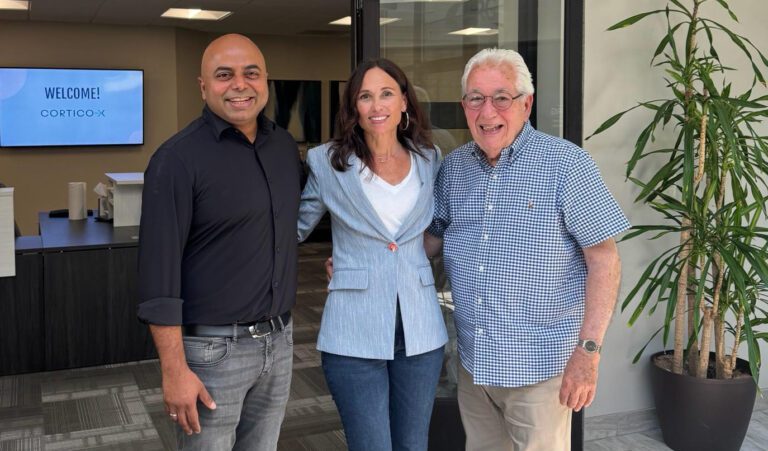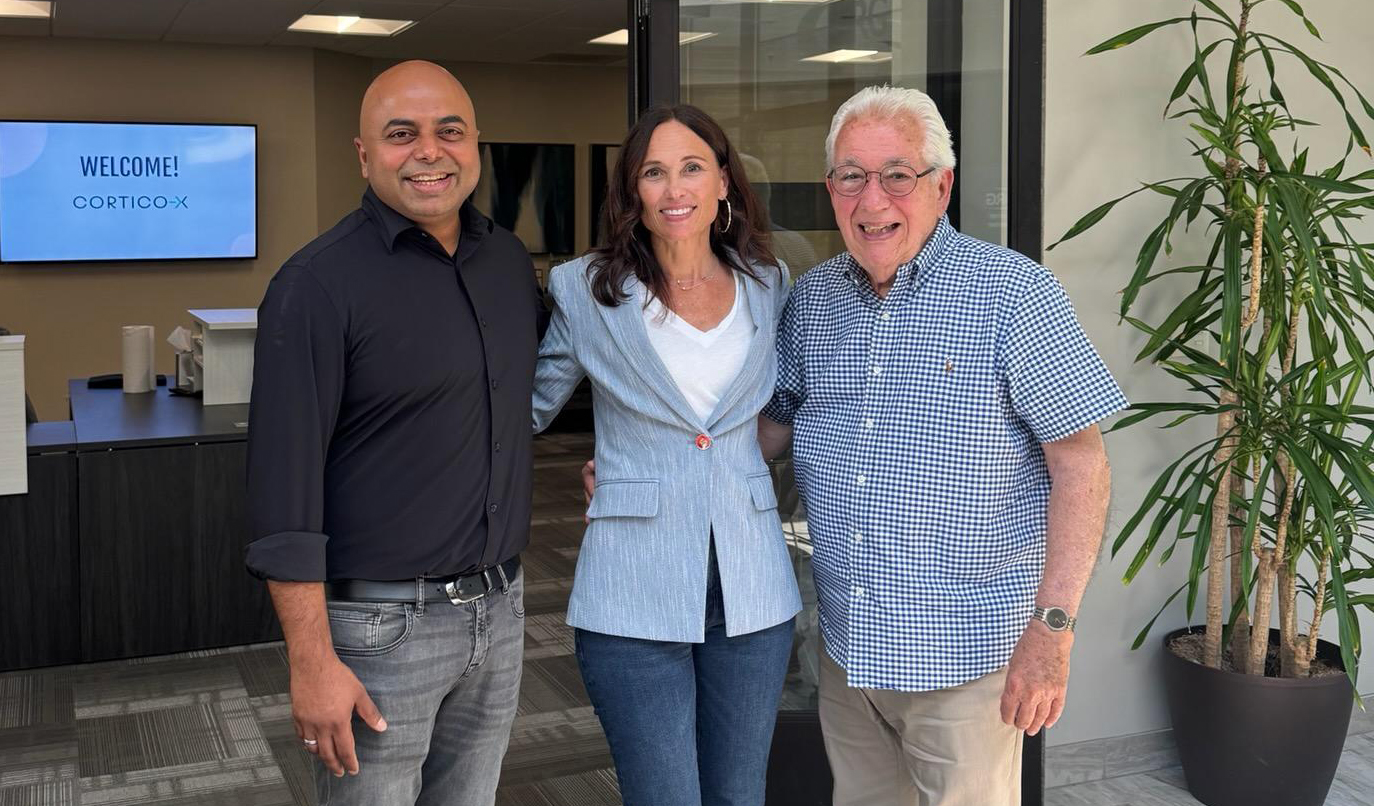Imagine this: A customer who doesn’t speak English well walks into a hospital. A professional interpreter is called by the nurse for help. The interaction goes smoothly, and the customer appreciates the help.
But then, the breakdown begins. The follow-up discharge paperwork, bill and follow-up appointment email is in English only. The hospital app doesn’t support their preferred language. They aren’t confident in their next steps—or worse, they delay needed care.
This isn’t a rare scenario. We’ve seen it happen in healthcare, banking, law firms, insurance, schools—you name it. And every time it highlights the same issue: Language access isn’t systematized. We talk about digital transformation, customer trust, and equity all the time. But without the right infrastructure, those values don’t hold.
In a recent Cortico-X consumer poll, we asked consumers with limited English proficiency how easy it is to get support in their preferred language when having to navigate healthcare services. The answer, 50% say it isn’t so easy. Why?
- Long wait times for interpreters
- Communications are partially translated which leads to a broken experience – “I usually struggle to find a Spanish speaking representatives, and if they do speak the language, they don’t speak it fluently.”
- Not everything translates – “It was difficult to help my Aunt through the process because not all words translate over easily.”
Too often, we’ve seen organizations only solve half the problem:
- A school might translate report cards but have no process for interpreter support during IEP meetings.
- A credit union might localize its website but have no system to document interpreter use for customer service.
- A law firm may provide courtroom interpreters but no consistent workflow for translating filings or contracts.
- And in healthcare, it’s just as common: great interpreter services in the clinic, but no translated aftercare instructions or patient portal content.
Without a solution things break down. And when they do, the consequences are very real:
- Miscommunication that leads to safety risks and erosion of trust
- Gaps in documentation and compliance
- Missed opportunities to truly connect with the communities we serve
- Rapid rising costs for services, often a reactive model
There’s also a significant financial and legal implication. In healthcare, for instance, the average medical malpractice settlement was $425,000 in 2024.[1]
Also, due to miscommunication, patients with LEP have a 24% higher 30-day readmission rate than English-proficient patients. And under the Hospital Readmissions Reduction Program, re-admissions can result in hospitals losing up to 3% of their Medicare payments.
Here’s why this matters now more than ever:
- Over 25 million people in the U.S. are considered Limited English Proficient (LEP), and more than 68 million speak a language other than English at home (U.S. Census Bureau).
- This linguistic diversity is only growing—especially among younger, bilingual, and immigrant populations who are digitally connected and brand-conscious.
- Federal agencies have increasingly emphasized language access as a compliance and civil rights priority under Title VI of the Civil Rights Act and Section 1557 of the ACA.
[1] National Practitioner Data Bank (NPDB)
Introducing the Solution: A Combination of Emerging Technology Management Platforms and AI
New vendor agnostic interpreter and translation management platforms enable organizations to bring operations into one source of truth system to manage performance. Before these platforms, Interpreter Services and Translation Mgt teams would often independently manage the experience from respective seats in Operations and/or Marketing. Now with these platforms enabling line of sight to the end-to-end customer experience, teams can more easily optimize and improve access and create effortless experiences.
Now AI is taking it to an all-new level, accelerating and expanding access with Agent Assist tools and machine learning enabling teams to better meet needs.
What is a modern interpreter / translation management platforms?
Think of it as your command center for language access. Through a single, unified interface, it routes, schedules, and tracks spoken and signed language services—whether in person, over the phone, or via video. On the written side, it manages documents, forms, digital content, contracts, and more, ensuring consistency, quality, and scale with features like translation memory, built-in QA, and automated workflows.
A modern platform also functions as a master scheduling and triage system—matching each request to the most suitable interpreter based on language, availability, mode, and urgency. This reduces wait times, maximizes interpreter utilization, and ensures the right interpreter is connected to the right patient at the right time.
Performance dashboards monitor service quality, turnaround time, and cost, giving leaders the data they need to optimize operations, reduce spend, and deliver better patient and caregiver experiences.
Together, these capabilities form the digital backbone for serving multilingual communities!
How is AI improving access?
AI is helping healthcare systems shift from reactive interpretation services to a more proactive and scalable model of language access. It’s transforming the complete experience for patients, caregivers, and administrators.
On the front end, AI is enabling real-time support across voice, video, and chat, powering multilingual chatbots and instant translations that are trained on healthcare-specific terminology that helps preserve accuracy, tone and empathy, especially in moments that matter.
In the background, it’s helping systems optimize interpreter scheduling, ensure language-matching in real time, and continuously monitor performance and quality.
Vendors across the healthcare ecosystem are already applying these capabilities in innovative ways.
For instance, GLOBO’s KAI™ platform gives front desk staff instant and real time access to AI-powered language support in different languages via mobile phones by using speech recognition and text-to-speech. This is reducing wait times for live interpreters and improving patient flow. Their Live Quality system also monitors 100% of sessions in real-time, helping organizations arrive at a quality score, something that wouldn’t be possible without this scale.
On the operational side, Propio is using AI to streamline claims processing for multilingual documents. Their automated workflow identifies languages, digitizes scanned content, translates, extracts data, and scores quality. This has reduced claims TAT from 36 to 12 hours and improved accuracy.
No Barrier is pushing the envelope further by offering an AI-powered medical interpreter trained on clinically relevant terminology, tone, and context. It interrupts medical consultations in real-time when it detects potential misunderstanding – preventing medical errors before they happen.
Looking ahead, AI will play a greater role in sentiment and behavior analysis, helping clinicians better understand patients based on not just language, but emotion, tone, and cultural cues.
A modern solution:
- Improves safety through accurate communication
- Creates efficiency via automation and analytics
- Leads to cost savings or avoidance by reducing duplication and errors
- Stronger compliance with federal and state mandates, mitigating risks and avoiding fines
And most importantly: They’re enablers of trust. When people see their language respected—consistently, across channels and touchpoints—they engage more, adhere more, and stay loyal.
Modern Platforms Make It Scalable and Sustainable
The system itself isn’t enough. Modern platforms are powered by AI which means they’re not only smarter, they’re built to scale. Here’s how:
- AI automates interpreter scheduling, detects language needs in real time, and helps ensure translation quality and consistency.
- Cloud infrastructure connects the dots across your ecosystem—EMRs, CRMs, legal platforms, learning management systems, and more—enabling secure, system-wide access no matter your industry.
This kind of technology allows you to move from one-off accommodations to a sustainable, organization-wide capability. It’s not about tech for tech’s sake. It’s about delivering reliable, respectful, and responsive communication—at every touchpoint.
In healthcare, for example, some organizations are experimenting with AI to simplify and scale language access by piloting AI-driven interpreter routing to reduce wait times and improve visit efficiency. These types of pilots can offer insights for both healthcare and non-healthcare organizations looking to optimize access and efficiency.
In financial services, one credit union is testing tools that detect a customer’s language preference during digital intake—enabling more personalized support from the start.
At a time when national policies around inclusion and civil rights feel increasingly fragmented, organizations can’t wait for top-down mandates to drive equity. Investing in modern universal language access and management systems is a way to lead from the ground up—by committing to multilingual access, regardless of shifting political winds. It’s not just about compliance, it’s about building trust and relevance with communities that are growing in number, influence, and expectation. What’s needed is no longer a set of ad hoc solutions, it’s a systematic, scalable model that turns language access into a strategic capability.
If You’re a Leader, Start Here
Whatever sector you’re in, here are four steps we’d recommend:
- Audit your language access systems. Are your spoken and written workflows connected or fragmented?
- Map your customer or patient journey. Where are the language breakdowns happening? What patterns can you see in your customer feedback? Employee feedback?
- Bring together the right stakeholders from across Compliance, Ops, Marketing, HR, IT, and Experience teams.
- Understand the technology. Choose an integrated tool as your source-of-truth platform. To meet customer needs in multiple languages, most organizations need more than one vendor. Use a system to bring the operations together for a consistent experience that you can measure and monitor.
Language access isn’t just a checkbox. It’s a statement of who you are and who you serve. Taking a human centered approach to transform is essential. Let’s stop treating it like an afterthought. Let’s build it into the core of how we operate—with purpose, clarity, and humanity.

Robyn Gilson
is a Vice President at Cortico-X, leading our Healthcare practice. She leverages her vast CX and EX leadership expertise across industries to drive both cultural transformations and incremental growth for clients.

Edo Sayan
is a business transformation leader with expertise in financial services, payments, and healthcare. He has driven growth, customer experience, and multilingual strategies at Fortune 150 companies. Edo specializes in inclusive solutions that enhance engagement and business impact.

Shruti Verma
is a people-first problem solver with cross-industry experience in customer experience, digital transformation, and growth strategy. She works at the intersection of business, design, and technology to build journeys, products, and strategies that drive meaningful impact.











